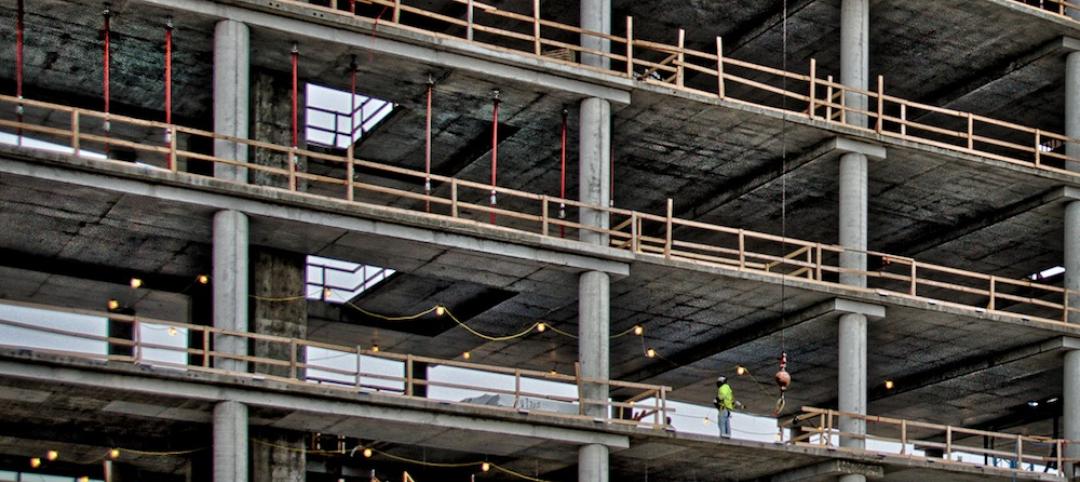Construction employment increased by 36,000 jobs in January to the highest level since August 2008, according to an analysis of new government data by the Associated General Contractors of America. Association officials said a possible new measure being discussed in Washington that would invest an additional $1.5 trillion in repairing and improving infrastructure would both help the sector continue to add jobs and attract new workers.
"The construction industry has consistently added workers at nearly double the rate of the overall economy," said Ken Simonson, the association's Chief Economist. "The outlook remains positive for further growth in the industry. But finding workers to complete all projects will be a challenge with unemployment so low overall and in construction."
Construction employment totaled 7,099,000 in January, a gain of 36,000 for the month and 226,000, or 3.3%, over 12 months. The economist pointed out that the year-over-year growth rate in industry jobs was more than double the 1.5% rise in total nonfarm payroll employment.
Residential construction—comprising residential building and specialty trade contractors—added 19,000 jobs in January and 88,400 jobs, or 3.3%, over the past 12 months. Nonresidential construction (building, specialty trades, and heavy and civil engineering construction) employment increased by 16,400 jobs in January and 137,200 positions, or 3.3%, over 12 months.
The number of unemployed jobseekers with recent construction experience fell to 707,000 in January, down from 859,000 in January 2017, while the unemployment rate in construction dropped to 7.3% last month from 9.4% a year earlier. The number and rate were the lowest for January since the series began in 2000. Unemployment data by industry are not seasonally adjusted, and winter figures for construction are normally higher than they are for total nonfarm employment, but these declines show how difficult it has become for the industry to find experienced workers, Simonson said.
Average hourly earnings in the industry climbed to $29.33, a rise of 2.9% from a year earlier. The economist noted that construction pays nearly 10% more per hour than the average nonfarm private-sector job in the United States.
Construction officials said that a new presidential push to boost infrastructure investments by $1.5 trillion over the next ten years would give a needed boost to infrastructure contractors who, according to construction spending figures released yesterday, have seen lagging demand compared to other market segments. Moreover, significant new and long-term investment in infrastructure would help encourage more people to consider high-paying careers in construction.
"Bringing our aging infrastructure back to a state of good repair will support short-term economic growth while making our economy more efficient and competitive over the long-term," said Stephen E. Sandherr, the association's Chief Executive Officer. "These new investments will also send a clear signal to new workers to consider careers in construction and the middle-class life those jobs support."
Related Stories
Architects | Feb 24, 2016
Is the booming freelance economy a threat to AEC firms?
By shifting the work (and revenue) to freelancers, “platform capitalism” startups have taken considerable market share from traditional businesses.
Religious Facilities | Feb 22, 2016
For the first time in Bulgaria, a temple’s construction raises a metal dome
The church is 2½ times larger than the basilica in Ukraine it references.
Market Data | Feb 10, 2016
Nonresidential building starts and spending should see solid gains in 2016: Gilbane report
But finding skilled workers continues to be a problem and could inflate a project's costs.
Contractors | Feb 2, 2016
ABC: Nonresidential spending falls again in December
For a second consecutive month, 12 of 16 nonresidential subsectors experienced spending decreases on a monthly basis.
Contractors | Feb 1, 2016
ABC: Tepid GDP growth a sign construction spending may sputter
Though the economy did not have a strong ending to 2015, the data does not suggest that nonresidential construction spending is set to decline.
Contractors | Jan 15, 2016
Controlling interest in Clark Construction sold to employee group
The death of its founder last year set the wheels of this transition in motion.
| Jan 14, 2016
How to succeed with EIFS: exterior insulation and finish systems
This AIA CES Discovery course discusses the six elements of an EIFS wall assembly; common EIFS failures and how to prevent them; and EIFS and sustainability.
Market Data | Jan 13, 2016
Morgan Stanley bucks gloom and doom, thinks U.S. economy has legs through 2020
Strong job growth and dwindling consumer debt give rise to hope.
Contractors | Jan 13, 2016
5 ways to handle conflict during construction
Rider Levett Bucknall's John Jozwick has five ways to curb disputes and prevent the situation from escalating to litigation.
Contractors | Jan 12, 2016
Will a notable credential make students preparing for construction jobs more marketable?
Zenith Education Group thinks so, as nine of its campuses offer training certification from the National Center of Construction Education and Research.

















